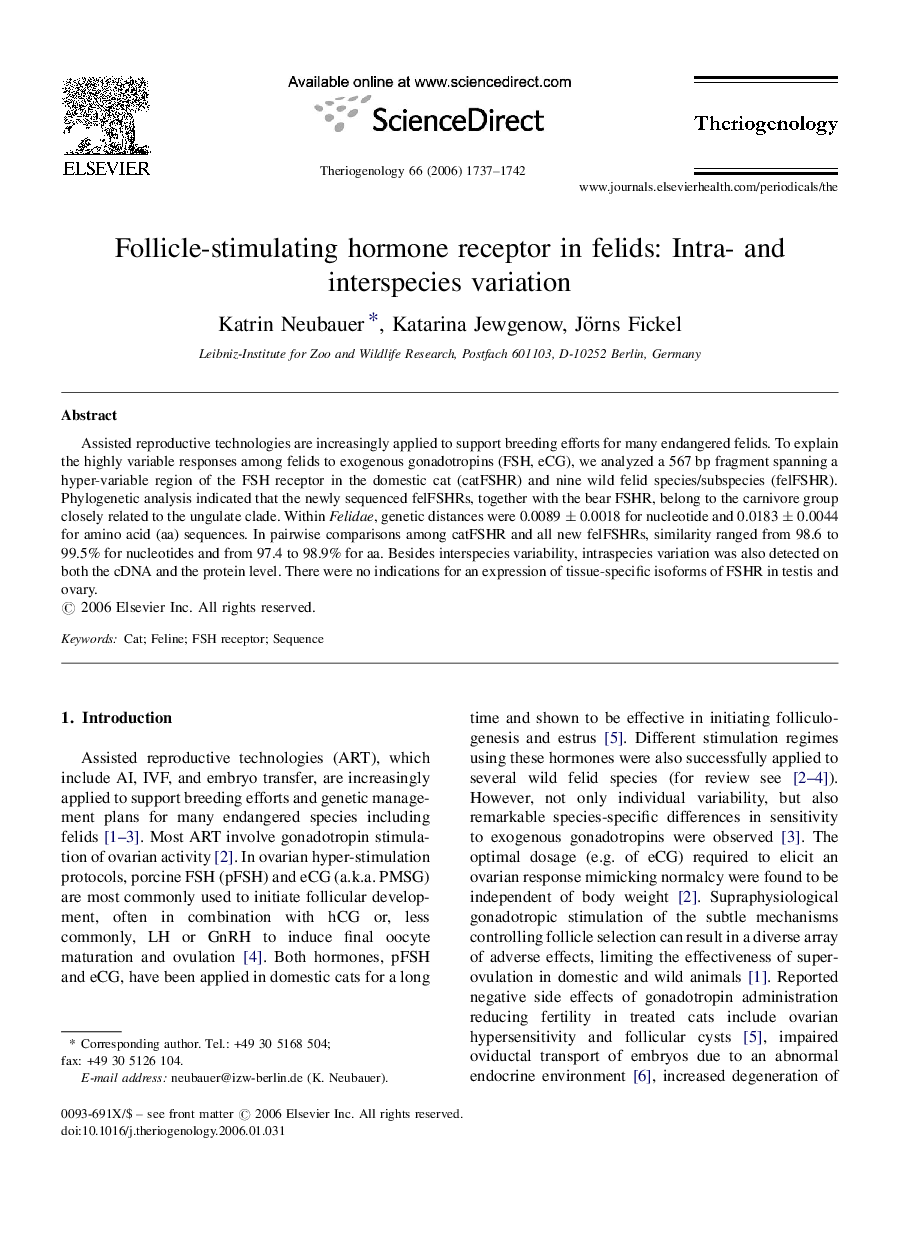| Article ID | Journal | Published Year | Pages | File Type |
|---|---|---|---|---|
| 2096783 | Theriogenology | 2006 | 6 Pages |
Assisted reproductive technologies are increasingly applied to support breeding efforts for many endangered felids. To explain the highly variable responses among felids to exogenous gonadotropins (FSH, eCG), we analyzed a 567 bp fragment spanning a hyper-variable region of the FSH receptor in the domestic cat (catFSHR) and nine wild felid species/subspecies (felFSHR). Phylogenetic analysis indicated that the newly sequenced felFSHRs, together with the bear FSHR, belong to the carnivore group closely related to the ungulate clade. Within Felidae, genetic distances were 0.0089 ± 0.0018 for nucleotide and 0.0183 ± 0.0044 for amino acid (aa) sequences. In pairwise comparisons among catFSHR and all new felFSHRs, similarity ranged from 98.6 to 99.5% for nucleotides and from 97.4 to 98.9% for aa. Besides interspecies variability, intraspecies variation was also detected on both the cDNA and the protein level. There were no indications for an expression of tissue-specific isoforms of FSHR in testis and ovary.
